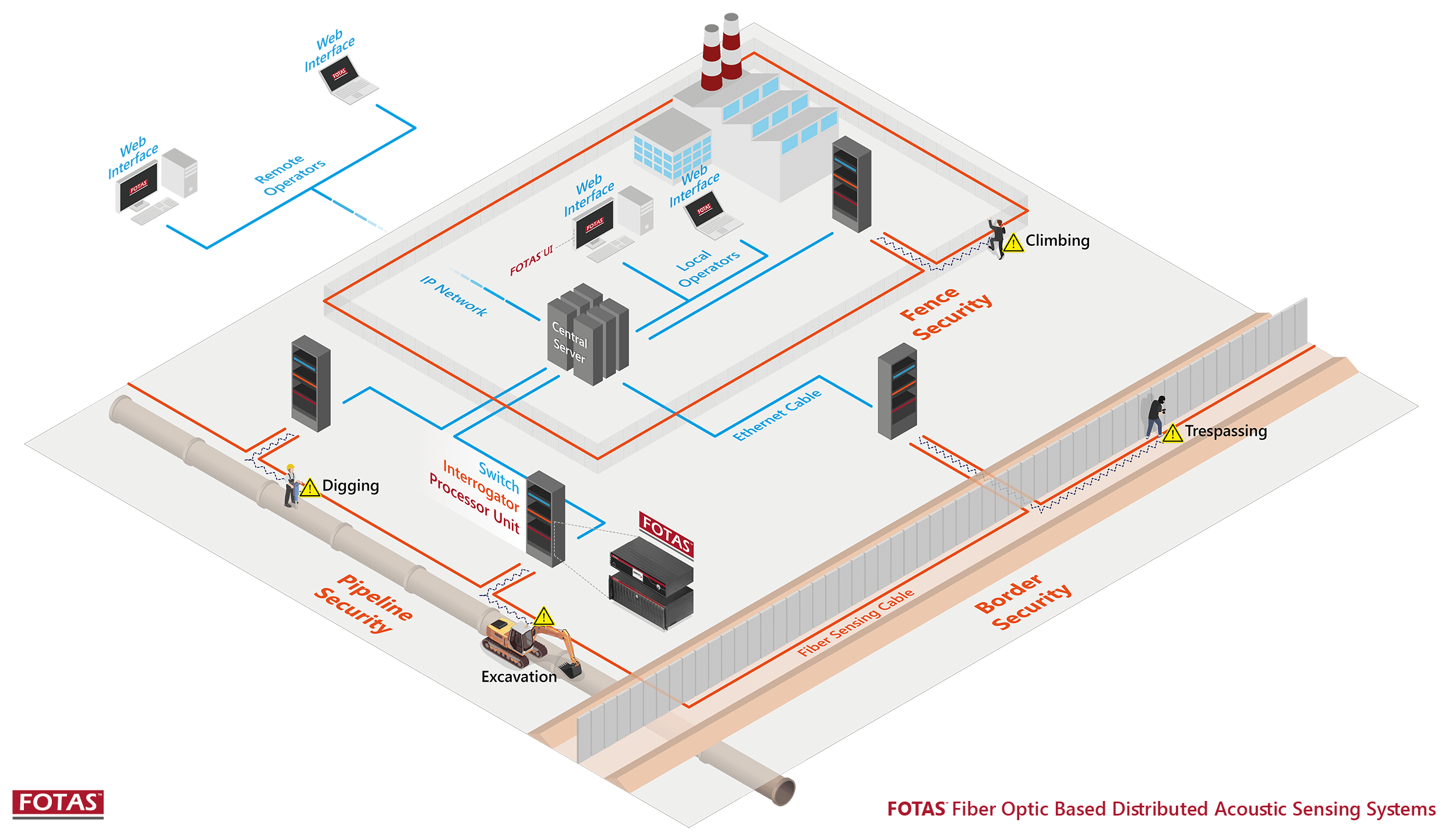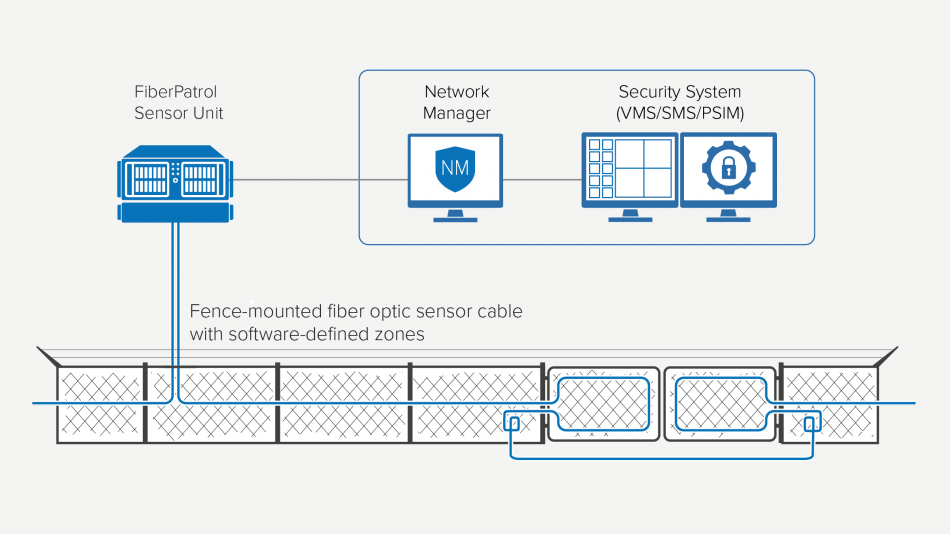Fiber Optic Security System: The Ultimate Solution for Your Business’s Security Needs
Fiber Optic Security System: The Ultimate Solution for Your Business’s Security Needs
Blog Article
Enhance Your Security With Advanced Fiber Optic Security Solutions
In an age where safety is extremely important, advanced fiber optic security systems present a compelling remedy for boosting safety and security across different settings. These systems not just flaunt superior data transfer and rate for high-resolution monitoring yet also supply impressive resilience against outside disturbances. As organizations significantly look for reputable ways to secure their properties, the combination of ingenious modern technologies like AI and IoT within fiber optic structures raises essential concerns regarding their efficiency compared to typical systems. What implications do these developments hold for future security actions?
Advantages of Fiber Optic Safety
Taking advantage of the benefits of fiber optic innovation substantially improves protection systems across various applications. One of the key benefits is the enhanced bandwidth capacity, enabling the transmission of huge amounts of data at broadband. This is specifically vital for real-time video clip surveillance, where high-resolution feeds can be sent out without latency, making certain prompt feedback capacities.
Additionally, optical fiber display superior resistance to electromagnetic interference, which is essential in atmospheres with prospective signal interruptions. This reliability makes certain consistent performance in critical protection operations. Fiber optic cords are much less vulnerable to tapping and unapproved access contrasted to traditional copper electrical wiring, thereby boosting information integrity and discretion.
Another significant benefit is the toughness of fiber optic systems; they are more resistant to ecological variables such as wetness, temperature level variations, and corrosive compounds. This strength equates to decrease maintenance expenses and longer life expectancies for protection installments.
Lastly, the lightweight nature of fiber optic cords assists in easier installment and transmitting, specifically in complicated facilities (fiber optic security system). Inevitably, the integration of fiber optic technology right into security systems not just bolsters defense measures but additionally enhances operational efficiency
Key Functions to Consider
When assessing fiber optic safety and security systems, a number of essential features should be considered to guarantee optimal efficiency and performance. Initially, analyze the system's detection variety and sensitivity; a comprehensive range permits keeping an eye on large locations, while high sensitivity guarantees that also minor disruptions are discovered without delay.
Following, consider the integration capabilities of the system. A fiber optic protection system ought to effortlessly interface with existing security measures such as cameras and alarms, producing a natural security network.
Sturdiness and environmental resistance are also important attributes. Make certain that the system is made to hold up against rough weather and potential physical threats, as this will certainly extend its operational lifespan.

Finally, consider the scalability of the system. A robust fiber optic safety and security system ought to be easily expanding to fit future demands without considerable overhauls. By thoroughly taking into consideration these attributes, you can select a fiber optic safety remedy that enhances safety and security and security in your setting.
Installment Refine Review
To efficiently apply a fiber optic security system, a systematic installation procedure is necessary. This process begins with a detailed site assessment to identify the particular security needs and to recognize optimum areas for fiber optic cable televisions and safety click to find out more and security devices. Following this analysis, the setup team will develop an in-depth strategy, consisting of cord pathways, needed equipment, and conformity with local guidelines.
Following, the setup involves laying the fiber optic cords, ensuring they are secured from environmental elements and physical damages. Proper handling strategies are critical, as fiber optic cable televisions are sensitive and can be conveniently harmed. After the cabling is mounted, ports and terminations are diligently finished to ensure signal honesty.
The subsequent phase includes mounting protection tools such as cameras, activity detectors, and alarm, all incorporated with the fiber optic network. Rigorous screening is carried out to confirm that all components are operating correctly and to make sure optimal performance.

Contrasting Fiber Optic to Conventional Equipments
The advancement of security innovation has led to substantial innovations in the contrast in between fiber optic systems and traditional copper-based systems. Fiber optic systems utilize light to transmit information, using superior data transfer and speed compared to their copper counterparts. This results in boosted information transmission capabilities, making fiber optics excellent for high-resolution video clip surveillance and real-time tracking.
Additionally, fiber optic wires are resistant to electromagnetic interference, lowering the probability of signal degradation brought on by external variables. This characteristic ensures consistent efficiency, also in challenging settings. On the other hand, typical copper systems are much more susceptible to interference, leading to potential susceptabilities in safety and security applications.
Longevity is an additional advantage of fiber optic systems. They are much less prone to damage from environmental elements such as dampness and temperature level variations, which can compromise copper circuitry. Fiber optics are lighter and thinner, enabling for less complicated installation and minimized physical footprint.
However, conventional systems have a tendency to have lower initial expenses, making them eye-catching for budget-conscious projects. While fiber optic systems might need a higher ahead of time investment, their long-lasting benefits-- such as reduced upkeep prices and better dependability-- commonly exceed the preliminary cost, positioning them as an exceptional option for modern-day safety demands.
Future Patterns in Protection Technology
Arising patterns in safety innovation are positioned to transform the landscape of surveillance and hazard detection - fiber optic security system. As organizations increasingly face sophisticated risks, developments such as artificial knowledge (AI) and equipment discovering (ML) are becoming integral to safety and security systems. These technologies improve the capacity of fiber optic systems by making it possible for real-time data evaluation, determining abnormalities, and automating actions to prospective breaches
Furthermore, the assimilation of the Web of Things (IoT) is transforming protection frameworks. IoT tools can give detailed situational understanding and assist in smooth interaction in between various safety and security components. This interconnectedness allows for extra reliable tracking and faster incident feedback times.
Biometric verification important link is also gaining energy, offering a higher degree of safety and security via special physical attributes. As this technology advances, it is likely go to be incorporated right into fiber optic systems for enhanced accessibility control.
Final Thought
In conclusion, progressed fiber optic safety and security systems stand for a considerable advancement in security and surveillance innovation. Their superior transmission capacity, resistance to interference, and resilience assist in dependable surveillance and data honesty. As these systems integrate AI and IoT capacities, they improve the total safety and security structure, making certain robust defense for assets. The shift from traditional systems to fiber optic remedies reflects an expanding trend in the direction of more effective and efficient safety measures in a progressively complicated technological landscape.
Report this page